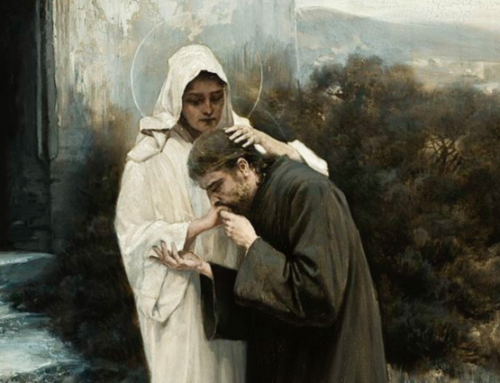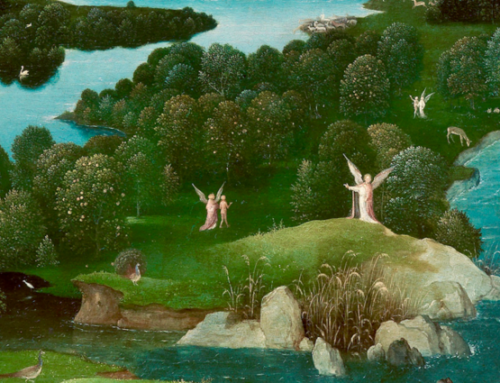Together, four men and one woman—the Boston Classicists—brought American music to a level of sophistication it had never had before. Not only did they become the most highly respected composers in America, but their music was also heard abroad to great applause.
 In her early years America had the reputation, at least among sophisticated Europeans, as a cultural wasteland—a country that produced good steel ingots but not quality art, literature, or music. In the nineteenth century Americans strove to put the lie to this, polishing their artistic credentials. As Benjamin West became our first great painter and Washington Irving our first professional writer, the old prejudice began slowly to crumble, and both Europeans and Americans themselves awakened to the artistic talent and potential of the young country.
In her early years America had the reputation, at least among sophisticated Europeans, as a cultural wasteland—a country that produced good steel ingots but not quality art, literature, or music. In the nineteenth century Americans strove to put the lie to this, polishing their artistic credentials. As Benjamin West became our first great painter and Washington Irving our first professional writer, the old prejudice began slowly to crumble, and both Europeans and Americans themselves awakened to the artistic talent and potential of the young country.
If music—that is, music in the classical European tradition—took a little longer to take root here, it was partly owing to the lack of skilled performers, music schools, and concert halls. Many American musicians had to go to Europe for their training and it was well into the century before permanent symphony orchestras and conservatories were founded. For a long time, the orchestras were heavily staffed and often conducted by émigrés from Germany and other European countries.
Not surprisingly given this background, American composers were not thick on the ground before the Civil War. There were some early eccentrics and mavericks—such as Bohemian immigrant Anthony Philip Heinrich (1782-1861), the self-taught composer of American-themed works like The War of the Elements and the Thundering of Niagara. But by and large, America lacked the groundwork for a sustained and unified “school.”
That all changed when a homegrown group of composers arose in the shade of Harvard and other institutions of Boston around the middle 1800s. They have been dubbed the Boston Classicists or Second New England School, and their godfather was Harvard professor John Knowles Paine (1839-1906). Paine wrote symphonies in a Beethovenian style, a Mass in D minor—the first musical setting of the Mass ever written by an American—and an oratorio, St. Peter. The Mass is of more than academic interest and has even been compared with Beethoven’s Missa Solemnis.
Other members of the group were Arthur Foote (1853-1937), George Chadwick (1854-1931), Amy Beach (1867-1944), and Horatio Parker (1863-1919). Most of them made the pilgrimage to Europe to complete their educations, and they wrote music that was strongly influenced by the more Classical side of German Romanticism.
In 1879 George Chadwick’s rollicking Rip Van Winkle Overture won over his mentors at the Leipzig Conservatory, and the young composer was launched. He went on to write three symphonies and other orchestral works, five string quartets, and several operas. The Second and Third Symphonies and the Symphonic Sketches bubble along with jubilant gaiety and a Yankee quality of good-natured mockery he characterized as “snapping the fingers at Fate.” Chadwick’s evocation of American scenes in his music has been likened to the artwork of Currier and Ives and Norman Rockwell.
Apart from the fact of her being the only woman in the group, Amy Beach stands out for having perhaps been its most technically skilled composer, as well as an acclaimed pianist. Her Gaelic Symphony is one of the major early American symphonic works, with strong themes and sweeping development.
Arthur Foote of Salem, Massachusetts wrote exquisitely crafted chamber music (e.g., Night Piece for flute and strings) while Horatio Parker—like Foote, a church organist—specialized in grand religious choral works like the apocalyptic oratorio Hora Novissima.
Together, these four men and one woman brought American music to a level of sophistication it had never had before. Not only did they become the most highly respected composers in America, but their music was also heard abroad to great applause (Paine’s Mass, for instance, was given the distinction of being premiered in Berlin).
And although German Romanticism was the major influence on these composers, it would be a grave mistake to think of their music as merely “warmed-over Brahms.” Chadwick’s pentatonic frontier-type melodies, snappy rhythms, and open spacious textures carry an unmistakably American allure that was in the air these composers breathed. One critic has spoken of “Mendelssohn with a touch of buckwheat.”
In fact the question “What should American music sound like?” was a burning concern in those days, and Antonin Dvorak’s solution proved compelling. During his sojourn in our country, the Czech composer advocated using American Indian and Negro melodies as a source of inspiration for American classical compositions—an idea he put into practice with his symphony From the New World, which became a shining model for the composers of the New England School.
The great strength of the school was to place Europe and the United States in a continuum of musical tradition. Their activity was rooted in a sense of music as an uplifting intellectual, moral, and spiritual force—an idea propounded by the influential Boston music critic John Sullivan Dwight (1813-1893) during a period when Boston was dubbed “Athens of America.” This high philosophy of music was amplified by the new musical institutions rising across the country—conservatories and orchestras like the Boston Symphony (founded in 1881). With the New England School, American music had taken a seat at the table of Western culture.
These achievements would soon pass out of memory. By the 1920s, a new generation of composers led by Charles Ives and Aaron Copland was searching for a more overt “American sound” in their music, and the New England School represented everything they wanted to get away from—too European, too conservative, and too “academically correct.” In short order Chadwick and his comrades were dismissed as quaint historical relics and their works mostly forgotten.
It’s a familiar story: A new generation grows up, decides to strike a fresh path, and consigns everything that came before to the dustbin. Not only is the past simply past, it is useless. We find this pattern time and again in the history of art, and the tragedy is that it distorts history and deprives the public of fine works to enjoy.
When Leonard Bernstein, in one of his Young People’s Concerts, referred to the New England Classicists the “kindergarten period of American music,” he may have been purposely over-simplifying for his young audience. Still, the phrase was emblematic of a general attitude toward these musical craftsmen. When Ives is named as the “father of American music,” ignoring the fascinating backstory and the skillful contributions of the New England School, one is aware of a sad injustice.
The eclipse of the New England Classicists says some interesting things about artistic values. It signals the rise of an artistic philosophy that devalued craft and exalted the personal and subjective, (represented especially by Ives). It tells of how the Romantic cult of originality and individualism turned into modernism, imperiously laying down rules of “progress” and excluding everything from either past or present that failed to conform. Perhaps most curiously, it reminds us that there were those who saw American culture as essentially separate from, rather than an extension of, the cultures of the Old World.
Yet many things in art that are touted as “revolutionary” turn out upon closer inspection to be evolutionary. So the American style pioneered by Aaron Copland, with its “wide open spaces,” is in a clear line of descent from the expansive American Romantic music of Chadwick. And as Charles Ives himself admitted, he learned a great deal of his craft from his teacher at Yale—Horatio Parker.
American classical music in the 20th century would branch off into a variety of directions, French Impressionism, jazz, and folk influences among them. But it was the New England School that made it all possible and laid the foundations for a distinctive and distinguished American style of music. Copland, Ives, Gershwin, and countless others all owed a debt to them. Even more, the productions of the New England Classicists are enjoyable and memorable on their own terms, a body of work that complements the best European music of the era.
Fortunately we have been able to hear these works more frequently of late, thanks especially to some fine recordings. Yet a great many classical music lovers are unaware this treasury of music even exists. For too long Americans have suffered from a cultural inferiority complex—a tacit assumption that anything American must be inferior—and a blissful ignorance of our rich heritage of art and music. The creations of the Boston Classicists are a part of that heritage, and over a century later still give us cause for pleasure and pride.
The Imaginative Conservative applies the principle of appreciation to the discussion of culture and politics—we approach dialogue with magnanimity rather than with mere civility. Will you help us remain a refreshing oasis in the increasingly contentious arena of modern discourse? Please consider donating now.
Editor’s note: The featured image is “The Return of Rip Van Winkle” (1849) by John Quidor (1801-1881), courtesy of Wikimedia Commons.







I have never read of the Boston classicists and have sadly never played in an orchestra that chose to perform one of these pieces. Thanks so much for sharing this fascinating part of our American history!